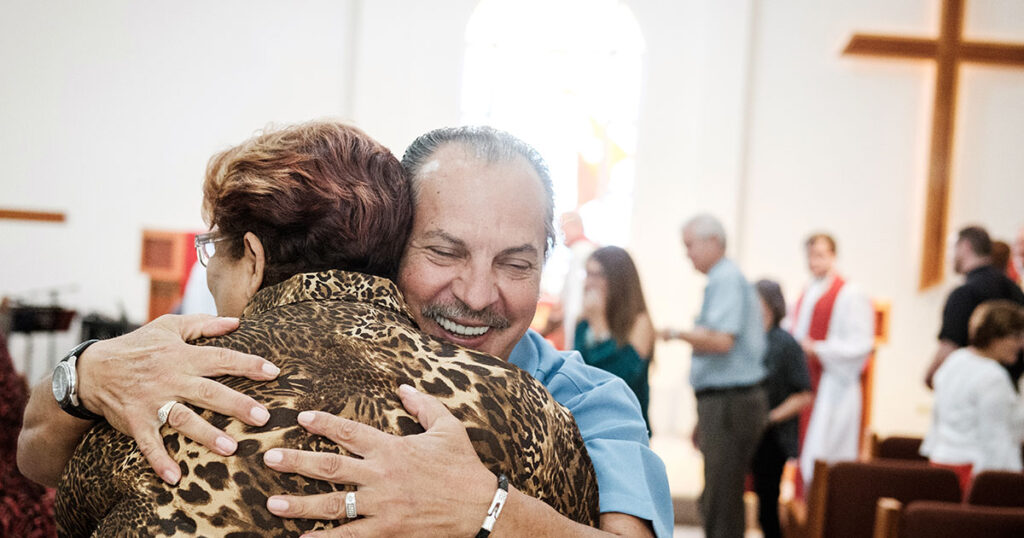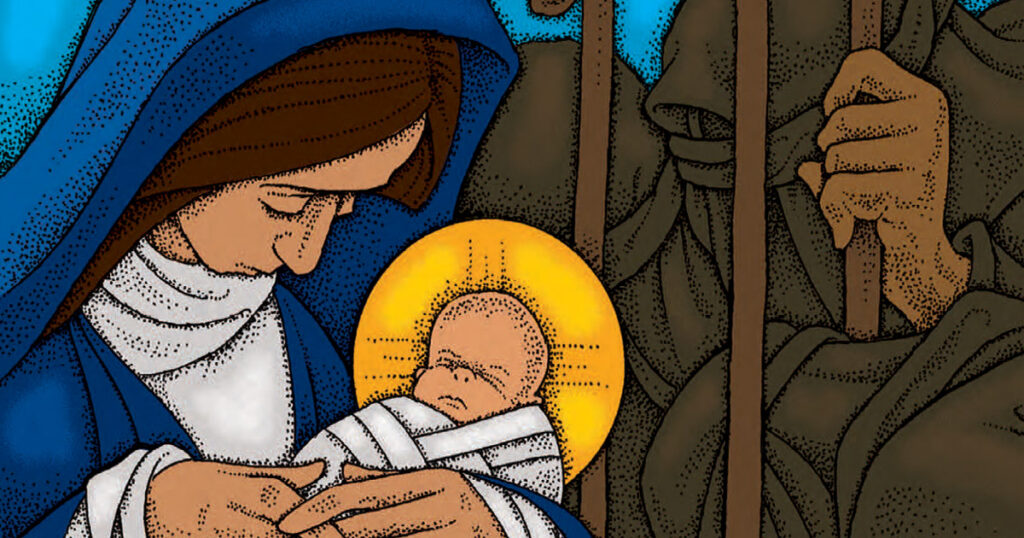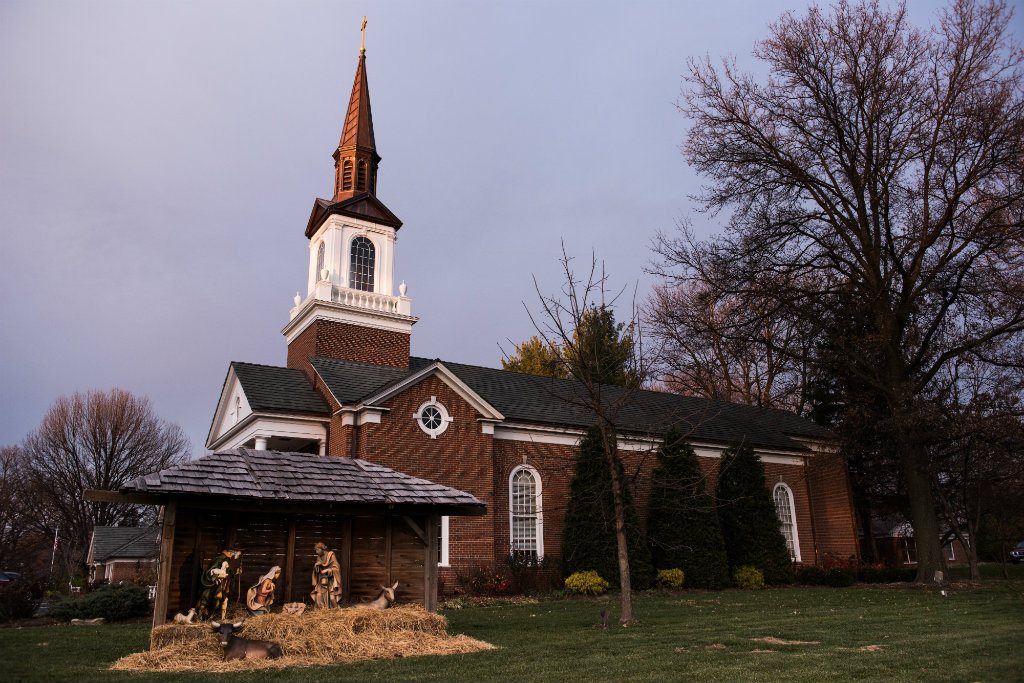Does this article exist? You can’t hold it in your hands, turn the pages, mark it up with a pen and highlighter, or crumple it up and throw it in the recycling bin when it irritates you. Somewhere, it’s stored as a series of 1s and 0s, transmitted as 1s and 0s to your device, converted into black and white pixels, and shone into your eyeballs as light.
If you love it or hate it, you might copy and paste the more inflammatory parts and post it on Facebook (which is neither a face nor a book), tweet it (silently, of course) or share it with your followers (who have never gone anywhere with you). You probably won’t print it out, gather some conversation partners, read it out loud and debate its merits.
What is man?
But articles and blog posts are not people. The comparison fails to answer the anthropological questions of an increasingly digitized world: What is man? What is a human being? Is the version of me that exists in binary code, that manifests in pixels, really me? Am I my Facebook page or Instagram profile?
The question needs an answer from outside our digital age. From Genesis 3 until Jesus’ return, we live with a diminished reality. Sin and the fall have made us less human. We are not as God created us to be, nor as we will be in the resurrection. To answer our question, we should look to the ideal.
From the dust of the earth
When God makes man in Genesis 2, He forms him out of the soil of the earth and then breathes into his nostrils the breath of life. Formed from the earth and breathed into from above, man sits at a midpoint between Creator and the creation. He is both matter and spirit, body and soul. God declared this union between body and soul — which makes a man the image-bearer of God — to be “very good.”
At the other end of the story, in Revelation, we see the restoration and fulfillment of what Eden should have been. New heavens and new earth. The dwelling of God with man. He will wipe away their tears. No more death. A beautiful, perfect city: new Jerusalem. A perfect river. A tree of life yielding fruit every month (Revelation 21–22).
The fall broke the trajectory of the Garden of Eden. It was intended to end up like the garden city of Revelation 21–22. Sin knocked everything off course.
Consider the way in which our certain, future resurrection, which has already been delivered to us in Baptism, sets the pattern of daily life in the New Testament. We ought to live according to the ideal, according to our resurrection reality.
- Do you not know that all of us who have been baptized into Christ Jesus were baptized into his death? We were buried therefore with him by baptism into death, in order that, just as Christ was raised from the dead by the glory of the Father, we too might walk in newness of life. For if we have been united with him in a death like his, we shall certainly be united with him in a resurrection like his. (Romans 6:3–5)
- If then you have been raised with Christ, seek the things that are above, where Christ is, seated at the right hand of God. (Colossians 3:1)
- The body is not meant for sexual immorality, but for the Lord, and the Lord for the body. And God raised the Lord and will also raise us up by his power. Do you not know that your bodies are members of Christ? (1 Corinthians 6:13–15)
- Therefore, my beloved brothers, be steadfast, immovable, always abounding in the work of the Lord, knowing that in the Lord your labor is not in vain. (1 Corinthians 15:58)
The resurrection governs the Christian life. The end — the telos— governs the in-between times. What we will be orders what we are.
Digital you
That brings us back to the questions that have been nagging us since the beginning of the article: What is man? Can man be virtual? Is the avatar of you on Facebook or in the Metaverse really you? No. Digital you is not you. It lacks both body and soul. A digital representation of you cannot encompass both the reality of creation and the hope of the resurrection.
Consider what we confess in the Creed.
“I believe in God, the Father Almighty. … What does this mean? I believe that God has made me and all creatures; that He has given me my body and soul, eyes, ears, and all my members, my reason and all my senses.” What He has created is the reality.
“I believe in the Holy Spirit, the holy Christian church, the communion of saints, the forgiveness of sins, the resurrection of the body, and the life everlasting. … What does this mean? … On the Last Day He will raise me and all the dead, and give eternal life to me and all believers in Christ. This is most certainly true.” He will restore also reality.
Life in-between
For now, we live in-between. And what’s between the First and Third Articles of the Creed? Jesus.
In Him, God puts the trajectory of creation back onto the path toward the new creation. And how does He do it? With flesh. Body and soul.
The eternal Word, the Second Person of the Holy Trinity, became flesh (John 1:14). He who was spirit and not matter did not save mankind in a disembodied, virtual way. He became flesh. In the womb of His virgin mother, the Word through which all things were created — including Mary — was an embryo. He became soul and body, though the latter for a moment comprising only a few cells.
What is man? Jesus. His human nature is full and complete, unspoiled by sin, therefore more human than you.
The physicality of faith
Because of the incarnation, the enfleshment of God, Christianity is quite physical. It is anti-virtual (a quite ridiculous phrase, to be sure). Salvation does not lead away from the physical into more spiritual stuff. Exactly the opposite. Salvation moves to fuller and more real physicality. The Word who became flesh promises resurrection for your flesh.
FaceTime, Zoom calls, online meetups, virtual communities and the Metaverse all may be fun and interesting modes of communicating; but they don’t replace the community of people in the same place, unmasked, interacting, touching, hearing, smelling and seeing each other. The Word became flesh.
For that matter, online “church” may have been a necessary and helpful way to continue hearing the Word during the pandemic. And for a time, it served its purpose. Perhaps. But it isn’t church. It isn’t the assembly of the people of God at a particular time and place around His fleshly means of delivering His grace to His people. The water of Baptism, the absolving voice of the pastor, the bread and wine of Holy Communion, the sound waves that vibrate the air and simultaneously strike the eardrums of all the assembled hearers: These are the fleshly ways the incarnate Word interacts with His people.
An incarnational community
We need physical community. We need the physical presence of other people. We need to see one another’s faces and be seen by others. We need to laugh and cry, to smile and blush, to grimace and groan with one another. The Word became flesh.
Fleshly people do fleshly things. People who confess a bodily resurrection do resurrection things. Close TikTok and go dance with real people. Follow some uninfluential people on a trail through the woods and listen to the tweets of real birds. Meet your real friends — or make new ones — for coffee and look at their faces. You are body and soul, flesh and blood, matter and spirit. And that’s good.
Life is more real than data and pixels. The Word became flesh.
Photo: LCMS Communications/Erik M. Lunsford






RE: “FaceTime, Zoom calls, online meetups, virtual communities and the Metaverse all may be fun and interesting modes of communicating….”
This Lutheran parishioner has found videoconferencing to be tremendously valuable in maintaining a Bible study group that otherwise would have disbanded with the arrival of COVID. Over the past 18 months, people many miles apart have come together virtually most Friday evenings for fellowship, and prayer. The two hours we set aside often go by much too fast. Through these difficult months with no shortage of personal challenges even apart from COVID, our increased understanding of God and of one another has engendered spiritual joy that I would like to see multiplied across my congregation and elsewhere.
Consider these aspects of being the body of Christ:
• “By this all people will know that you are my disciples, if you have love for one another.” (John 13:35 ESV)
• “Bear one another’s burdens, and so fulfill the law of Christ.” (Gal. 6:2 ESV)
• “And let us consider how to stir up one another to love and good works, not neglecting to meet together, as is the habit of some, but encouraging one another, and all the more as you see the Day drawing near.” (Hebrews 10:24-25 ESV)
We can certainly meet virtually to demonstrate our love for one another, bear one another’s burdens, and stir up one another to love and good works. There is no question that videoconferencing can help brothers and sisters in Christ support one another in a manner that pleases God and, by his grace, brings greater fruitfulness and blessedness to his own glory.